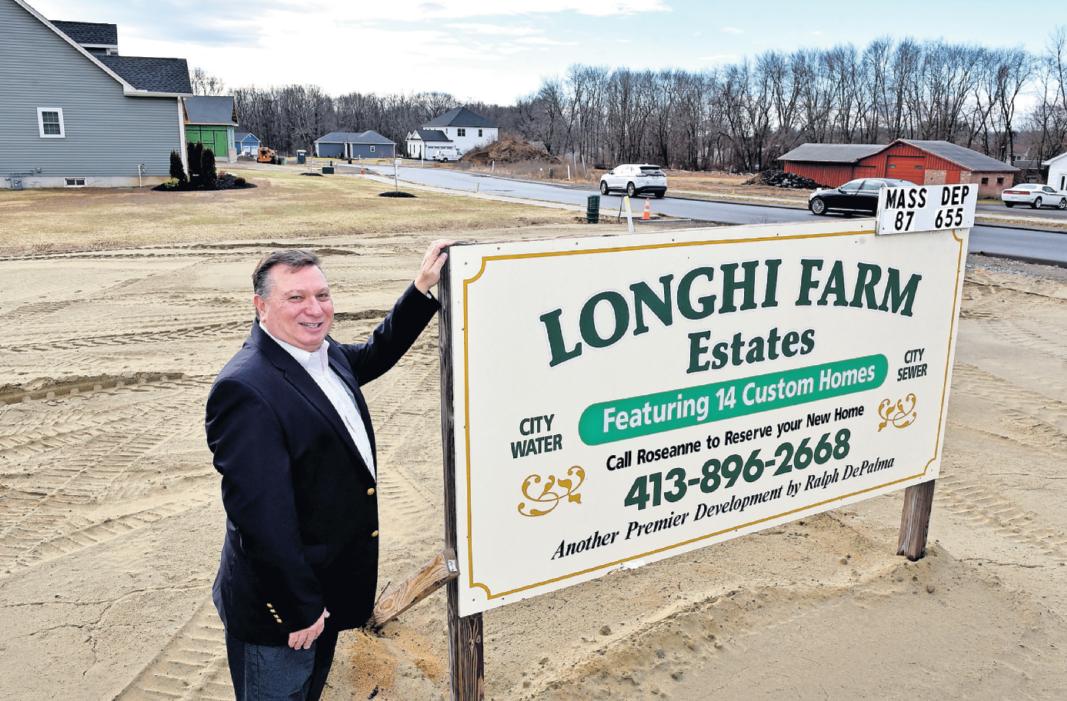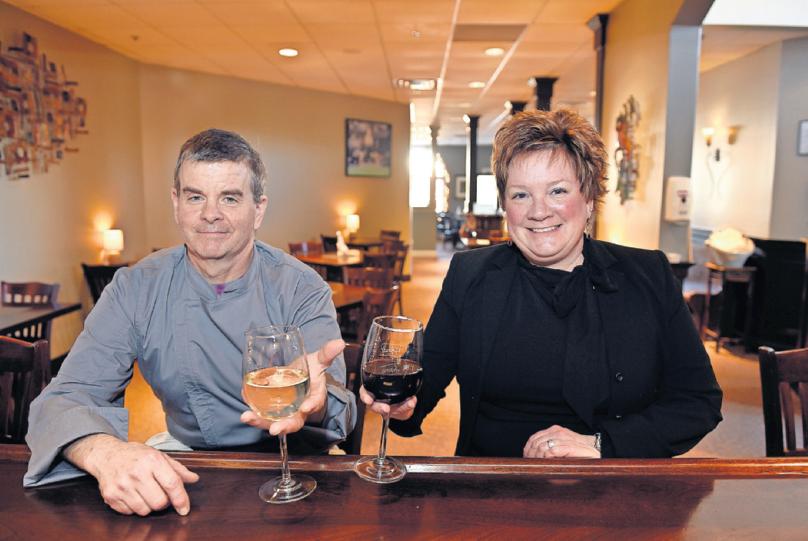
8 minute read
Rising interest rates, reduced inventory at play
from Outlook 2023
by repubnews
It’s the American dream — owning your own home.
But for some that dream may take a little longer, as rising mortgage rates put their dreams on hold in a market that is low on inventory as fewer people put their homes up for sale — all resulting in falling home sales.
The numbers from the National Association of Realtors have not been encouraging.
“In essence, the residential real estate market was frozen in November, resembling the sales activity seen during the COVID-19 economic lockdowns in 2020,” said the association’s chief economist, Lawrence Yun. “The principal factor was the rapid increase in mortgage rates, which hurt housing affordability and reduced incentives for homeowners to list their homes. Plus, available housing inventory remains near historic lows.”
To put the local market into perspective, the Realtor Association of Pioneer Valley, in its mid-January report of single-family home sales for December showed a 36.8% drop year-over-year from 601 sales in December 2021 to 380 in 2022.
“Condos are also selling well, as seniors are looking to sell their homes and move into smaller properties.”
Pat Wheway, real estate agent with Coldwell Banker Realty in Longmeadow, agrees, saying, “Condos are selling like hotcakes.”
“Baby boomers are trading in their big colonials and moving into beautiful new condos, which no longer carry the distinction as places where ‘only their grandma lives,’” she said.
High interest rates are taking many first-time buyers out of the market, as well as those looking to move up, Molta said. As a result, adjustable rate mortgages, where you get a lower interest rate for a set number of years, are becoming more popular, he added.
‘for informational purposes only.’”
Without waiving inspection, “for informational purposes only” allows the buyer an opportunity to see the home, identify things that are wrong without requiring the seller to fix them, and they can still walk away from the transaction.
Offering additional tips for those in the marketplace, Molta recommends that those considering buying a home should start saving as soon as possible in order to place a good down payment and to be pre-approved and have as high a credit score as possible.
Sellers, added Molta, should price their homes correctly and they will “likely get very close to their asking price if not the normally, and that interest rates will increase some. So, get pre-approved so you are ready to jump when you find the house you want.” What it all comes down to is that “ownership is important” and brings pride and enjoyment into your life as well as financial stability, said Lori Beth Chase, president of the Realtors Association of Pioneer Valley.
Pioneer Valley Home Sales
Here are key details from the Realtor Association of Pioneer Valley’s single family home sales report for December 2022:
• Sales: Down 36.8%, 601 in December 2021 to 380 in December 2022;
• Median price: Up 11.9%, $279,950 in December 2021 to $313,250 in December 2022;
• Inventory: Down 19.1%, 592 homes for sale in December 2021 to 479 homes in December 2022;

• Days on market : Up 14.2%, 37 average days in December 2021 to 42 days in December 2022
“Everyone dreams of owning their own home. You are building your own wealth for your family and future generations,” said Chase. “When sitting with new buyers who are renting, I always tell them the interest rate may be 6% or 7% right now, but you are paying 100% in interest with your rent. I explain to them that all of the money they are paying to the landlord is going into their pocket and they are gaining wealth, not you.”
Chase added, “You can take that income, the rent you are paying, and put it into something you are going to build equity in, something you are going to own, and that is so important for the financial wealth of every human being.”
“2022 started off as an overheated market, where people would put their house up for sale and expect multiple offers, some having over the asking price, resulting in the home selling quickly. But the second half of the year was like a light switch flipping off and it became more challenging,” said Robert Molta, CEO of Berkshire Hathaway Home Services in East Longmeadow. “I think 2023 will enter us into a slower period, a more balanced market.”
Over the past decade, Molta noted, the average price of a home in Western Massachusetts has gone from about $175,000 to a little over $300,000.
“Multifamily homes are hot. We’ve seen for a while single-family homes going way over asking price, but I don’t see that happening as much as inventory has increased a little, but is still quite low,” said John Brunelle, broker-owner of B & B Real Estate in Holyoke.
All three Realtors note that the interest rates need to be put into perspective.
“Interest rates remained low for so many years so the market could recover from the housing crash of 2008,” Wheway said, referring to the period when property values collapsed and foreclosures spiked.
“Back in the 1980s, mortgage rates were about 18% but are now at a more realistic 6 to 7% and are not going back to a time when they were at 3%,” she said, adding that the market has endured “a crazy two years” during the pandemic.
“We’ve seen some buyers offering as much as $30,000 over asking price, but also waiving inspections. If they decide they want to waive inspection, I tell them to find another Realtor,” Wheway said. “There were sellers who wouldn’t take an offer if there was going to be an inspection. What I have suggested is that they do an inspection actual asking price.”
Brunelle recommends that sellers go through their property to make sure there are not any structural problems and that the mechanical components of the home are in good working order.
In addition, Brunell said, sellers should make sure the house is “clean and presentable” so when the potential buyer walks in they can “envision moving right onto the home.”
“If there is a wet mark on the ceiling, for example, get it fixed,” said Wheway. “We always go in, no matter what the price of the home, to stage it. We move things around ... make it look more presentable.”
Wheway urges both sellers and buyers move forward with their plans.
“I hear from others that it is such a bad time to buy, but it’s not. Don’t wait,” she said. “I believe that we will continue to see home prices increase, but slowly and

By K EITH O ’C ONNOR Special to The Republican
Here’s some food for thought: Everyone needs to eat. The question is, are they eating at home or out in a restaurant?
“The restaurant industry is ending the year in an environment that’s the most typical since 2019,” said Hudson Riehle, senior vice president of Research for the National Restaurant Association. “Moderate but positive employment growth across the economy and elevated consumer spending in restaurants will allow the restaurant industry to kick off 2023 on a more optimistic note than the last few years, but operators remain braced for potential challenges in the new year.”

Multi-restaurant owner Federico Mendiola, of Frontera Grill — with locations in Springfield, Chicopee, and Manchester, Connecticut, as well as Garcia’s Mexican Restaurant in Amherst — agrees with Riehle’s assessment, noting he considers business to be “almost back to normal levels prior to COVID-19.”
“The overwhelming majority of the public have decided they would like to return to restaurant dining as part of their life and to be as much as it was prior to the pandemic,” said Daniel Gonya, business development manager for Table 3 Restaurant Group. Table 3 includes Avellino, The Duck, Cedar Street Grille, Cedar Street Café and The Barn at Wright Farm banquet facility, all in Sturbridge. The pandemic continues to have some influence on customers, though, according to Karen Anderson, owner of Tucker’s Restaurant in Southwick.



“We still have customers who come in asking if they can sit at a table away from everyone else, which is hard to do on a busy Friday or Saturday night,” Anderson said.
“And we’ve had bookings last year where some would call three days prior to their event and cancel because people were afraid of COVID.”
Indeed, 2022 started off anything but normal.
“2022 felt like several different years in one. In January and February, there were still COVID restrictions in some places. Fast forward some nine months later and we had a robust holiday season,” said Stephen Clark, president and CEO of the Massachusetts Restaurant Association.
“People wanted to get out and reconnect with friends and family.
“And what we’re seeing now is that grocery store prices are up, menu prices too. But the delta, which is the amount of the percentage they have gone up, is the biggest difference in 50 years, where it is that much more expensive to go to the grocery store, relatively speaking, than going out to dinner.”
As consumers returned to restaurants, challenges such as labor shortages, supply chain issues and inflation all impacted the bottom line.
Anderson’s husband, Michael Anderson, chef and
Students from the Ohio Future Farmers of America have fun inside the Massachusetts building at the Eastern States Exposition on Sept. 16, 2022. For decades, the Big E has welcomed thousands of young farmers from across the country to the exposition each September. (HOANG ‘LEON’

NGUYEN / THE REPUBLICAN)
Cassidy
CONTINUES FROM PAGE M6 it came from and how during the pandemic when schools were closed and the New England milk market shut down in an instant, how the producer of that product survived. In this age there is a movement toward food awareness — a conscious understanding that an item was locally grown. This is a good thing for our regional food producers. They have much to be boastful about and any increase in demand driven by local interest is beneficial to them, and, importantly, to the next generation that follows. Because that is how farmers are made — they are procreated on their homesteads. There is zero likelihood of a kid from a Greater Springfield neighborhood becoming our next dairy farmer. Supporting our regional agriculturists falls on us. Helping them through the post-pandemic recession should be our priority.
We have a responsibility to not be complacent, overlooking the value and importance of our regional agriculture. I wrote on these pages several years ago (2017) that because of our disconnect from agriculture and the sinister activities of some who veil themselves as protectors of animals and agriculture, we would face a destructive increase in the price of eggs beginning in 2022. That increase was driven by a referendum question that was permitted on our ballot in November 2016. At the time, you could buy a dozen eggs at the friendly Big Y for 99 cents. Thanks to media such as The Republican and efforts by agriculture professionals, including Eastern States Exposition, awareness was raised regarding the impact of that bill. The legislature and former Gov. Charlie Baker approved a modified version of the original bill in December 2021. Still, today, the cost for eggs has been driven by that refer- endum and, at $5.99 a dozen, the most efficient protein delivery system conceived is now a luxury item leading to ever-increasing food insecurity in our region. That ballot question was designed by its authors to put Massachusetts’ commercial poultry growers out of business — an effort that extends to other states today. While we still have several boutique producers raising cage-free eggs, at $6.79 per dozen, not many can afford them.
We have an expression at Eastern States Exposition: “Agriculture is Our Culture.” We try to make it fun. We know it can get lost in the translation of the fair, but in these changing times, we hope agriculture becomes your culture, too. Support local agriculture. It is so important.
Eugene J. Cassidy is president and CEO of the Eastern States Exposition. To learn more about the exposition, go online to thebige.com










